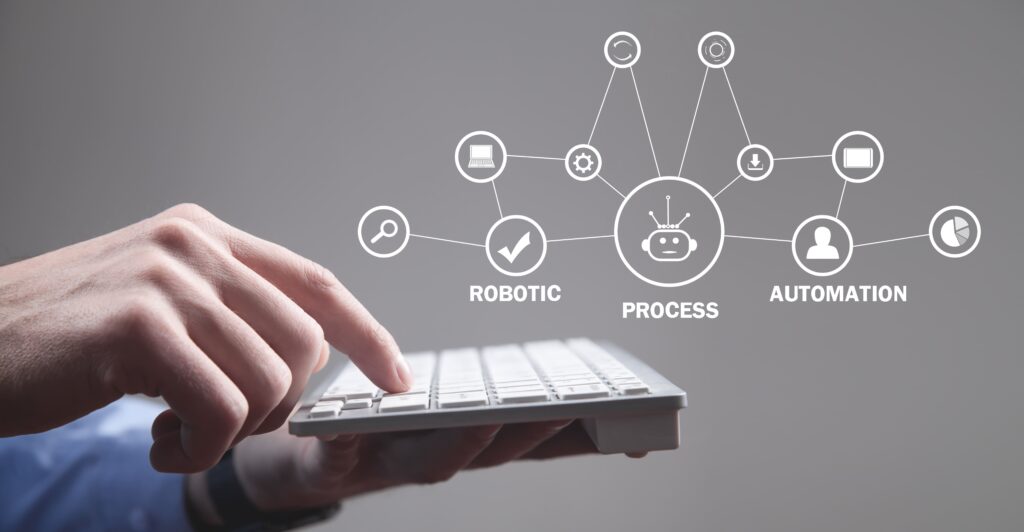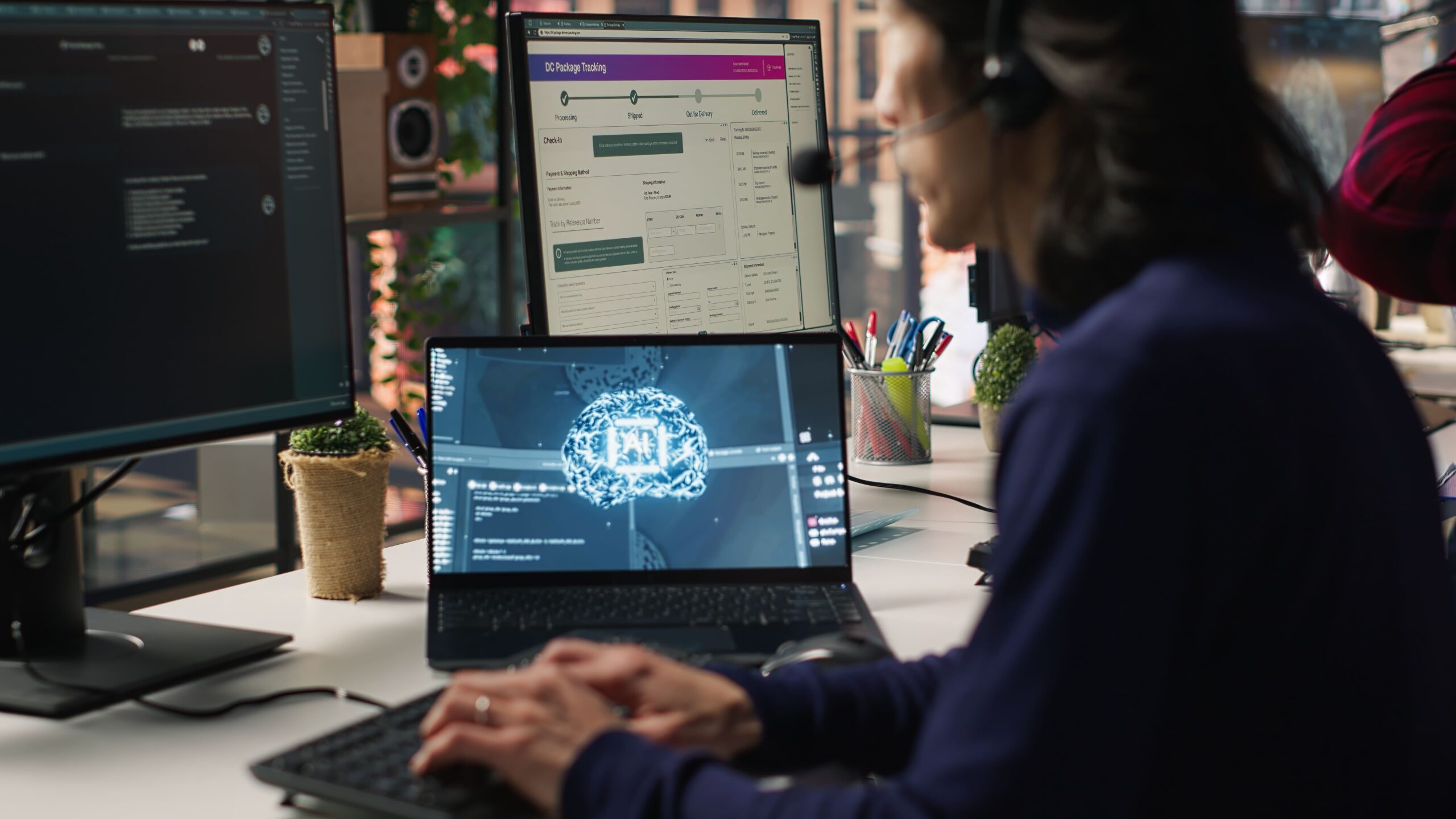How is AI revolutionizing web development? In 2025, AI in web development is speeding up coding, enhancing user experiences, and automating repetitive tasks. This article explores ten ways AI is transforming the field, making development faster, smarter, and more efficient.
Key Takeaways
– AI-powered code suggestions are enhancing coding efficiency and accuracy in web development by adapting to individual coder styles and automating repetitive tasks.
– AI is revolutionizing user experience through personalization, optimizing performance, and enabling low-code/no-code platforms that democratize development.
– Security and data privacy remain critical as AI tools enhance debugging and coding standards, ensuring web applications are robust and user data is protected.
AI-Powered Code Suggestions
Coding can be a meticulous and time-consuming process, but AI-powered code suggestions are changing the game. Tools like:
– GitHub Copilot
– Kite
– Tabnine are leading the charge by integrating seamlessly with popular Integrated Development Environments (IDEs) such as Visual Studio Code. These AI tools significantly increase coding speed and reduce errors by providing real-time code suggestions that help you write code that is contextually relevant and precise through prompt engineering.
Imagine having an AI assistant that not only understands the programming languages you use but also learns your individual coding style. These AI tools can be fine-tuned to adapt to a developer’s preferences, making the coding experience more intuitive and personalized. They automatically generate code snippets based on AI prompts, allowing developers to focus on solving complex problems rather than getting bogged down by repetitive coding tasks.
The integration of machine learning and data-driven insights in these AI-powered tools means that they continuously improve, learning from vast amounts of code to provide smarter suggestions. Whether you’re working on a small project or a large-scale web application, AI-powered code suggestions and pre trained models are an invaluable asset in the coding process, enhancing both efficiency and accuracy.
Automating Repetitive Tasks

Repetitive tasks can drain time and energy, but AI is stepping in to automate these mundane activities, freeing developers to focus on more innovative and complex projects. AI coding assistants enhance developer efficiency by automating tasks such as:
– Code completion
– Testing
– Routine maintenance This not only reduces workloads but also ensures that repetitive tasks are handled with precision and consistency.
AI allows developers to shift their focus from mundane tasks to more strategic and creative efforts. Imagine the huge amounts of time saved when AI tools automatically generate ai generated code, perform link checks, or conduct malware scans. This automation allows for rapid prototyping and faster iteration cycles, crucial for complex web applications and projects, especially with the addition of ai powered features and artificial intelligence.
To automate repetitive tasks, workflows must be analyzed to identify processes suitable for automation. This strategic approach ensures that the right task is automated, maximizing efficiency and productivity. As AI continues to evolve, its ability to handle repetitive tasks will only improve, providing even greater support for web developers and enhancing the overall web development process
Enhancing User Experience with AI
User experience (UX) is at the heart of successful web development, and AI is playing a pivotal role in enhancing it. AI personalization leverages data to tailor user interactions, leading to more engaging and relevant experiences. By analyzing user preferences and behaviors, AI provides data-driven insights that help create more personalized and contextually appropriate digital experiences.
AI’s ability to adapt its recommendations and content based on ongoing user behavior means that personalization improves over time, following a learning curve. This continuous learning process ensures that users are always presented with content that is most relevant to them, significantly improving customer satisfaction and loyalty. Effective AI personalization requires a robust foundation of user data, making the understanding and analysis of user preferences crucial.
Beyond personalization, AI also helps optimize website performance by recommending changes for better user experience and faster loading times. This holistic approach to enhancing user experience ensures that websites and web pages are not only visually appealing but also functional and efficient. In 2025, AI is setting new standards for user-centric web development, making every interaction meaningful and engaging.
AI-Driven Low-Code and No-Code Platforms
Low-code and no-code platforms are democratizing web development, allowing business users with limited technical skills to create AI-powered web apps. These platforms use visual interfaces and pre built templates, making it easier for non-developers to create sophisticated web applications that were created without deep expertise in programming languages or data science.
One of the significant advantages of low-code AI platforms is their ability to reduce development time significantly. What used to take months can now be achieved in weeks or even days. These platforms often include features for rapid prototyping, allowing businesses to quickly iterate on application designs based on feedback. This agility is crucial in today’s fast-paced digital landscape.
Many low-code platforms offer various pricing tiers, including free editions, to accommodate different types of users and organizations. This inclusivity ensures that businesses of all sizes can leverage AI-driven development tools to create impactful web applications. In 2025, AI-driven low-code and no-code platforms are empowering a broader audience to participate in web development, fostering innovation and creativity.
Advanced Bug Detection and Fixing
![]()
Debugging can be one of the most challenging aspects of web development, but AI is revolutionizing this process by enabling developers to quickly identify and resolve code errors. Advanced AI tools can analyze code behavior in real-time, providing data-driven insights that aid in diagnosing complex problem solving effectively. This real-time analysis means that developers can address potential problems before they escalate, ensuring smoother and more reliable web applications while also helping to debug code.
Tools like Snyk offer comprehensive solutions for detecting vulnerabilities, performing security tests, and recommending fixes. This not only enhances the security of web applications but also streamlines the debugging process by offering specific, actionable insights with this tool.
In 2025, AI-driven bug detection and fixing are essential components of the web development tools toolkit, ensuring that applications are both robust and secure.
AI in Web D
Web design is an art, but it’s also a science, and AI is bridging the gap between creativity and data-driven insights. AI enhances user experience design by providing:
– Personalized content
– Adaptive interfaces
– Intuitive navigation By analyzing user behavior, AI can offer automated design elements recommendations that are tailored to the specific needs and preferences of users, resulting in more effective and engaging web designs.
The manual effort involved in web design is significantly reduced with AI, allowing for greater efficiency and accuracy in the design process. AI tools can:
– Automatically generate layouts and wireframes, streamlining the rapid prototyping process
– Enhance overall design flexibility
– Enable web developers to quickly iterate on designs, making adjustments based on real-time user feedback using an ai website builder.
AI’s role in web design is not just about automation; it’s about enhancing creativity and user experience. By leveraging AI prompts and generative AI, web developers can create more dynamic and responsive designs that adapt to the needs of users. In 2025, AI is making web design more accessible, efficient, and user-centric, setting new standards for digital experiences.
AI-Assisted SEO Optimization
Search Engine Optimization (SEO) is crucial for visibility and success in the digital landscape, and AI is enhancing this process significantly. AI supports SEO efforts by analyzing:
– search engines algorithms
– competitor keywords
– user intent
– page performance
This comprehensive analysis allows for more effective SEO recommendations that are aligned with current market trends and user behavior.
AI can automate tasks such as keyword research, content creation, and on-page optimization, making the SEO process more efficient and accurate. By generating content outlines that align closely with identified user search intent, AI ensures that the content is relevant and engaging. Real-time data insights provided by AI help marketers react swiftly to changing user behaviors and website performance issues.
Predictive analytics in AI can forecast future customer behavior, allowing for proactive marketing strategies that anticipate user needs and preferences. In 2025, AI-assisted SEO optimization is a game-changer, providing data-driven insights and automation that enhance visibility, engagement, and conversion rates.
Automated Website Analytics

Understanding user behavior and trends is essential for successful web development, and AI-driven analytics are taking this to a new level. AI enhances website analytics by providing deeper insights into user behavior and trends through sophisticated machine learning algorithms. These algorithms can uncover patterns and trends that human analysts might miss, offering a more comprehensive understanding of user interactions.
Real-time performance tracking is another key features of AI-driven analytics, allowing website owners to continuously monitor and adjust their SEO strategies. This includes:
– Real-time data collection and analysis that simplify the process of gathering customer data.
– Easier analysis of user engagement and behavior.
– Evaluation of user interactions to identify specific areas of a website that may cause user frustration or abandonment.
– Providing actionable insights for improvement.
In 2025, AI-driven automated website analytics are essential for optimizing user experience and enhancing website performance. By leveraging data-driven insights, web developers and marketers can make informed decisions that improve engagement, satisfaction, and overall success on the landing page.
AI Chatbots for Customer Engagement
Customer engagement is a critical component of any successful web application, and AI chatbots are revolutionizing this aspect. AI chatbots play a crucial role in enhancing customer engagement by providing round-the-clock support and immediate responses. This eliminates wait times and significantly improves customer satisfaction.
AI chatbots offer several advantages:
– Proactively engage with users based on their website activity, anticipating possible questions or issues before they arise.
– Ensure that users feel supported and valued, enhancing their overall experience.
– Offer multilingual support.
– Facilitate omnichannel communication, ensuring a seamless experience across different platforms.
In 2025, AI chatbots are not just customer service tools; they are integral to creating personalized and engaging user experiences. By leveraging AI, businesses can provide timely, relevant, and efficient support, building stronger relationships with their customers.
Security and Data Privacy in AI Development
Security and data privacy are paramount in the development process, especially with the integration of AI. AI-driven tools enhance code quality by applying coding standards consistently and identifying security issues. These tools maintain extensive databases of security vulnerabilities and provide actionable insights for remediation, ensuring that web applications are secure from potential threats.
It’s essential for organizations to obtain explicit consent from individuals before using their data for AI development. Assessing AI privacy risks throughout the lifecycle of an AI system is crucial to protect against potential harms. This involves protecting personal information that AI collects, uses, and shares, ensuring that data privacy is maintained.
The integration of AI in web development must prioritize security to protect user data and maintain trust. By limiting data collection to what is legally permitted and aligns with user expectations, organizations can mitigate privacy risks. In 2025, the balance between leveraging AI and ensuring data privacy is critical for sustainable and ethical web development.
Summary
In 2025, AI is revolutionizing web development by automating repetitive tasks, enhancing user experience, and providing advanced tools for coding, design, SEO, and security. As we continue to embrace AI, the possibilities for innovation and efficiency in web development are limitless. The future of web development is here, and it’s powered by AI. Stay ahead of the curve and leverage these AI advancements to create smarter, more engaging, and secure web applications.

Leave a Reply